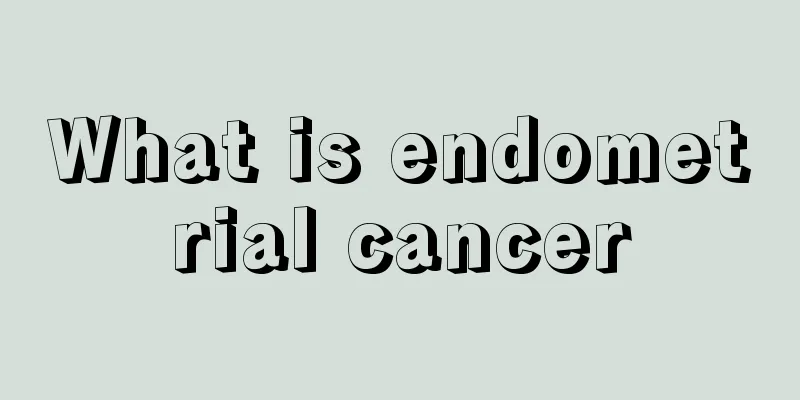What is endometrial cancer

|
What is endometrial cancer? I believe everyone is afraid of endometrial cancer because it is a malignant tumor that poses a great threat to the patient's health. It is more common in perimenopausal and postmenopausal women, and its mortality rate is second only to ovarian cancer and cervical cancer. So, what is endometrial cancer? Endometrial cancer is one of the most common female reproductive system tumors. Its incidence is closely related to lifestyle, and the incidence rate varies in different regions. In North America and Europe, its incidence rate is second only to breast cancer, lung cancer, and colorectal tumors, ranking first among female reproductive system cancers. In my country, with the development of society and the improvement of economic conditions, the incidence of endometrial cancer has increased year by year, and is currently second only to cervical cancer in female reproductive system malignancies. The cause of endometrial cancer is still unclear. It is generally believed that endometrial cancer can be divided into estrogen-dependent (type I) and non-estrogen-dependent (type II) according to its pathogenesis and biological behavior characteristics. Irregular vaginal bleeding is the main symptom of endometrial cancer, which is usually a small to moderate amount of bleeding. In young women or perimenopausal women, it is often mistaken for irregular menstruation and ignored. In postmenopausal women, it often presents as continuous or intermittent vaginal bleeding. Some patients only present with a small amount of bloody vaginal discharge after menopause. In advanced patients, bleeding may be mixed with rotten meat-like tissue. Some patients have varying degrees of vaginal discharge. In the early stages, it may present as thin white discharge or a small amount of bloody leucorrhea. If there is infection or necrosis of the cancerous foci, there may be purulent discharge with a peculiar smell. Sometimes, the vaginal discharge may be accompanied by tissue-like substances. The cancerous foci and the bleeding or infection caused by them may stimulate uterine contraction and cause paroxysmal lower abdominal pain. The treatment principle of endometrial cancer is to choose the appropriate treatment method according to the patient's age, physical condition, lesion range and histological type. Since most endometrial cancers are adenocarcinomas, which are not very sensitive to radiotherapy, surgery is the main treatment. Other comprehensive treatments include radiotherapy, chemotherapy and drugs (chemotherapy, hormones, etc.). |
<<: How to treat prostate cancer with traditional Chinese medicine
>>: Is endometrial cancer a malignant tumor?
Recommend
Teach you to wake up early and look in the mirror to discover hidden health information
In today's busy society, many people are in a...
Cost of biological therapy for colon cancer
How much does biological treatment for colon canc...
Is lung cancer contagious? Can lung cancer be contagious to others?
Now many people are paying attention to lung canc...
Is it necessary to get vaccinated to prevent hepatitis C?
According to current regulations, children under ...
At what age can a child be helped to urinate?
Many Chinese parents have the habit of holding th...
How to control random thoughts all the time
It can be said that mental health will also affec...
How to tie a ponytail to look good on a round face?
Girls generally have longer hair, so it takes mor...
Notes on not drinking water before going to bed
Many of us men will drink some water before going...
Let’s learn about the causes of prostate cancer
Prostate cancer is a common cancer in life, and m...
What is the method and recipe of glutinous rice cake?
Glutinous rice cake is a dessert made from fresh ...
Symptoms of prostate cysts and prostate cancer
There are many people around us who have prostate...
Detailed explanation of what to do if blood supply to the brain is insufficient
If you experience any abnormalities in your body,...
What are hormones? The effects of hormones
Hormones are not unfamiliar to many people and th...
Is pancreatic cancer hereditary?
Pancreatic cancer is related to heredity, which c...
What does a negative cervical cancer screening test mean
A negative result in cervical cancer screening in...









